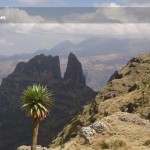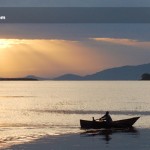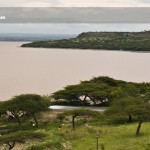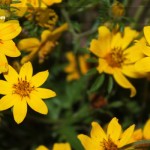Trekking is the most popular type of adventure tourism in Ethiopia, and it’s no wonder. Simien Mountains National Park and World Heritage Site is not only one of the most spectacular places to trek in Africa but also one of the most spectacular in the world. It is the crown of the Ethiopia Highlands, which is the largest afromontane zone anywhere. Its escarpment resembles and rivals the dramatic views of the Grand Canyon. The wildlife is unique, fascinating, and much of it is easy to see.
The lesser known Bale Mountains National Park, itself on the tentative list of World Heritage Sites, is also a world unto its own. While its escarpments are, perhaps, less rugged and abrupt and its top is almost 200m lower than the Simien Mountains, it hosts the largest afroalpine area in the world, on top of the Sanetti Plateau. While it doesn’t have geladas or ibexes, it does have the majestic mountain nyala and just about guarantees a sighting of the Ethiopian wolf, which is much harder to spot in the Simiens. Besides these two massifs, there are plenty of other places to trek, and the climates vary far beyond the cold afroalpine climates of the country’s two highest mountain ranges. In fact, at the extreme opposite end of the spectrum, summiting an active volcano that starts around sea level in the hottest place on earth is also possible. Backpacking also gives access to places much farther off the beaten path, sometimes in places not accessible by any other mode.
Whether hiking from camp or taking camp along in a pack in order to go farther on foot than just a day’s travel, camping in Ethiopia is a great way to enjoy the sights, sounds, and smells of this unique biome as they change throughout a 24-hour period.
Simien Mountains National Park
If there is time, even just two days if traveling by air, don’t miss this place. It is often compared favorably with the Grand Canyon or even the Himalayas, its main attribute being an escarpment. Even though a road follows this mega cliff for much of the way, a trail follows much closer, sometimes perilously so, but that only adds to the adventure. Along the first half of the trail, a spur heads west along an obstacle course-style
trail that ends atop a column with a view across a deep gorge to the tallest waterfall in Ethiopia, Jinbar Falls. After the halfway point along the escarpment, the road veers east to go around a deep valley, but the trail runs straight through it, staying near the ledge, through some of the more untouched parts of the park. It is here that another side trail juts out to the west leading to the end of a precipice called Imet Gogo. This is the most scenic viewpoint in the whole park by many accounts. From there it goes, up one of the highest points of the escarpment, along the biggest, broadest cliff face in the park. The trail and the road don’t meet again until they reach Camp Chenek, in a saddle between the aforementioned highpoint and Mount Bwahit, the fourth-highest point in the Simien Mountains (and all of Ethiopia). Mount Bwahit is a short climb about one Km and 160m above the highest part of the road in the park. The ease of climbing the fourth-highest peak in Ethiopia contrasts with the difficulty of climbing the highest, which is separated from the nearest road by a deep valley. Ras Dejen (Ras Dashen), at 4,543m, is the highest point in Ethiopia, and, while it may not even make the list of the top 10 highest peaks in Africa (depending on the prominence requirements of the list), it is the second-most prominent peak on the continent and the 23rd-most prominent in the world.
The Simien Mountains are also the fifth-highest mountain range in Africa, and, even though it can snow on Ras Dejen at any time of the year, barefoot shepherd boys are no less ubiquitous here than in any other part of the Simien Mountains. Ras Dejen’s slopes are also a good place for Ethiopian Wolf sightings, which are part of a local population that is smaller but more genetically diverse than that of the Bale Mountains.
In all, there are many reasons to visit Simien Mountains National and even to climb to the summit of Ras Dejen.










































